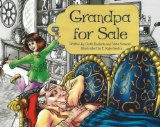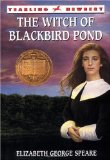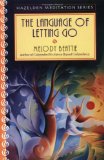Sonderbooks Stand-outs 2010
Happy New Year! Now that 2010 is over, it’s time for my TENTH annual list of the books I most enjoyed reading in the previous year. I began this tradition on January 1, 2002, when Sonderbooks was still an e-mail newsletter.
I’m not by any means trying to list the “most distinguished” books I read in 2010. My Newbery prediction list is quite different, in fact. Sonderbooks Stand-outs are, plain and simple, the books I enjoyed reading the most, for whatever reason. These are books I give as gifts and urge my friends to read, books that make me smile when I think about my year of reading.
Although I am putting them in order, this order has been changing all day long. All of the books I list here are outstanding, and are books I loved reading.
You may be puzzled that I already have 2010 Sonderbooks Stand-outs listed on my site. You see, when I started Sonderbooks Stand-outs, I named them after the year where I did the reading. For 2007-2010, though, I decided to imitate the Newbery awards and give them the name of the year they are awarded. However, I’ve changed my mind again. (The beauty of having my own website is I can change my mind as much as I want.) Since many of these books were published in 2010, and I read them in 2010, I’m going to copy the Cybils and call them 2010 Stand-outs. Of course, this means I will need to go back and adjust the stand-outs from the last four years.
I also am way behind on writing reviews: So the ones that I have already reviewed, I will link to the review. The rest, I will review just as soon as possible!
Here are the 2010 Sonderbooks Stand-outs, beginning with my favorite category, Teen Fantasy and Science Fiction:
Teen Fantasy and Science Fiction
1. A Conspiracy of Kings, by Megan Whalen Turner
2. Ice, by Sarah Beth Durst
3. Twice a Prince, by Sherwood Smith
4. Pegasus, by Robin McKinley
5. Ascendant, Diana Peterfreund
6. White Cat, by Holly Black
7. Enchanted Ivy, by Sarah Beth Durst
8. Star Crossed, by Elizabeth C. Bunce
9. Mockingjay, by Suzanne Collins
Other Teen Fiction
1. Dairy Queen, by Catherine Gilbert Murdock
2. The Cardturner, by Louis Sachar
3. A Brief History of Montmaray, by Michelle Cooper
4. The Body Finder, by Kimberly Derting
5. Suspect, by Kristin Wolden Nitz
Children’s Fiction
1. The New Policeman, by Kate Thompson
2. Clementine, by Sara Pennypacker, pictures by Marla Frazee
3. Plain Kate, by Erin Bow
4. One Crazy Summer, by Rita Williams-Garcia
5. The Dreamer, by Pam Munoz Ryan, pictures by Peter Sis
6. Forge, by Laurie Halse Anderson
7. Penny Dreadful, by Laurel Snyder
8. The Strange Case of Origami Yoda, by Tom Angleberger
Picture Books
1. Katie Loves the Kittens, by John Himmelman
2. Ladybug Girl at the Beach, by David Soman and Jacky Davis
3. A Bedtime for Bear, by Bonny Becker, illustrated by Kady MacDonald Denton
4. City Dog, Country Frog, by Mo Willems, pictures by Jon J. Muth
Fiction for Grown-Ups
1. Coronets and Steel, by Sherwood Smith
2. The Daughter of Time, by Josephine Tey
3. The Sweetness at the Bottom of the Pie, by Alan Bradley
4. Little Bee, by Chris Cleave
5. The Art of Racing in the Rain, by Garth Stein
6. Casting Spells, by Barbara Bretton
7. Shades of Grey, by Jasper Fforde
Nonfiction: True Stories
1. This Is Not the Story You Think It Is, by Laura Munson
2. Strength in What Remains, by Tracy Kidder
3. Zeitoun, by Dave Eggers
4. Mountains Beyond Mountains, by Tracy Kidder
5. My Stroke of Insight, by Jill Bolte Taylor
6. Born on a Blue Day, by Daniel Tammet
Other Nonfiction
1. The Ten Things To Do When Your Life Falls Apart, by Daphne Rose Kingma
2. Women Who Run With the Wolves, by Clarissa Pinkola Estes
3. Feel, by Matthew Elliott
4. This Book is Overdue! by Marilyn Johnson
5. Everything I Need to Know I Learned From a Children’s Book, edited by Anita Silvey
6. The Story of Stuff, by Annie Leonard
7. NurtureShock, by Po Bronson
So there they are! My favorite reads of 2010. Within a week or so, I hope to post a new page for these on my main site, as well as get more of the reviews of these books posted.
Please use the comments to tell me what your favorite books read in 2010 were!







